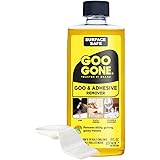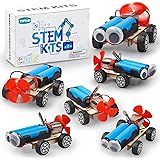Unlock Imagination: Create a DIY Toy Zoo for Kids!
Are you constantly looking for fresh, engaging activities to keep your little ones entertained and learning? It can be a challenge to spark curiosity and foster development outside of screen time. But what if there was a simple, hands-on solution that brings the wild wonders of a zoo right into your home? The video above gives a fantastic glimpse into just such an adventure, highlighting the joy of a DIY Toy Zoo for Kids, complete with interactive elements like a slider and playful marble balls.
Creating your own engaging play space, like a charming DIY toy zoo, is a wonderful way to combine fun and education. It’s about providing a stimulating environment where children can explore, discover, and learn at their own pace. This guide will help you dive deeper into creating your own interactive animal kingdom, extending the ideas shown in the video and offering fresh insights for enriching play.
Building Your Own Interactive Toy Zoo Adventure
The beauty of a DIY toy zoo lies in its versatility and the endless possibilities for imaginative play. Children are naturally drawn to animals. Seeing figures like a majestic giraffe, a strong elephant, or a sneaky crocodile really sparks their interest.
Imagine if your child could design their very own habitat for these creatures. This helps them learn about different animals and where they live. It encourages empathy and a broader understanding of the natural world.
Designing Your Fun Toy Zoo Habitat
To start your DIY toy zoo, think about what kind of “home” your animals will have. Simple cardboard boxes can become mountains, caves, or even water features for aquatic animals. Colorful craft paper can transform into grassy plains or lush forests, making the play experience truly vibrant.
This hands-on creation process is an excellent way to develop fine motor skills as children cut, glue, and arrange their zoo elements. It also introduces basic concepts of design and spatial reasoning, all while having a great time.
Adding Dynamic Play: Sliders and Marble Balls for Toddlers
One of the most exciting elements highlighted in the video is the use of a slider and marble balls. These aren’t just for decoration; they add a whole new layer of interactive fun and educational value to your DIY toy zoo. Imagine if a little marble ball could roll down a ramp, right past the zoo animals, creating a miniature adventure!
Incorporating sliders helps children understand cause and effect. They learn that pushing a marble down a slope makes it move. This is a fundamental concept in early science and physics. Using various lengths and angles for your slider can even introduce early engineering ideas.
Marble balls also offer excellent sensory play. The feel of the smooth, cool ball and the sound it makes as it rolls engages multiple senses. For toddlers, practicing placing the marble at the top of the slider and watching it go helps refine hand-eye coordination and fine motor control.
You can construct simple sliders from cardboard tubes or paper towel rolls cut lengthwise. Attach them to the sides of your cardboard zoo structures with tape or glue. This creates an exciting pathway for the marble balls to travel, adding a dynamic, playful element to your interactive zoo.
Learning Beyond Animals: Discovering Fruits with Kids’ Activities
The video also shows an engaging segment dedicated to learning about fruits. This is a fantastic way to extend the educational play beyond just animals. Recognizing different fruits like apples, oranges, watermelons, cherries, grapes, bananas, strawberries, and pineapples is an important part of early childhood learning.
Introducing these fruit names through colorful visuals, like those in the video, helps children build their vocabulary. It also lays the groundwork for understanding healthy eating habits from a young age. Parents can reinforce this learning by having real fruits available during snack time or by doing fruit-themed crafts.
Imagine if you had small toy fruits that your child could “feed” to the zoo animals. Or perhaps you could create a “fruit stand” within the DIY toy zoo. This integrates fruit learning seamlessly into their imaginative world. Such activities make learning about nutrition enjoyable and memorable.
The Fascination of Magnetic Play and Creative Development
Another intriguing moment in the video involved magnetic toys. Magnets are naturally captivating for children. They offer a simple, magical introduction to basic science concepts. The idea that some objects stick together without glue is fascinating for young minds.
You can easily incorporate magnetic play into your DIY toy zoo. For example, attach small magnets to the back of animal cutouts or use magnetic tiles to build parts of the zoo. This encourages children to experiment and discover which materials are magnetic and why.
Magnetic blocks or shapes can be used to build fences or enclosures for the animals. This adds another dimension to creative play, allowing for endless configurations and structural experimentation. It’s a subtle way to introduce STEM for kids, fostering curiosity about how things work.
Assembling Your DIY Toy Zoo: Practical Tips for Parents
Ready to start your own DIY toy zoo? Here are a few simple tips to make the process smooth and enjoyable:
- Gather Your Materials: You’ll need sturdy cardboard boxes, construction paper, non-toxic glue, child-safe scissors, crayons or markers, animal figurines, and some marbles or small balls. Don’t forget any magnetic toys you might have!
- Involve Your Child: This isn’t just a project for you; it’s an opportunity for collaborative fun. Let your child choose colors, draw animal features, or decide where elements like the slider go. Their input makes the project more meaningful.
- Focus on Safety: Always supervise young children, especially when small items like marbles are involved. Ensure all materials are non-toxic and there are no sharp edges.
- Embrace Imperfection: The goal is creative exploration, not a perfect masterpiece. Your child’s unique touches are what make their fun toy zoo special.
- Extend the Play: Once the DIY toy zoo is built, encourage storytelling, role-playing, and new ways to interact with the animals and features. Maybe the animals need to eat the fruits, or the magnetic crane needs to move rocks around the zoo!
Remember, the best learning happens when children are having fun. This kind of hands-on, creative play nurtures cognitive skills, boosts imagination, and develops important social and emotional understanding. A DIY Toy Zoo for Kids is more than just a craft; it’s a gateway to discovery.







